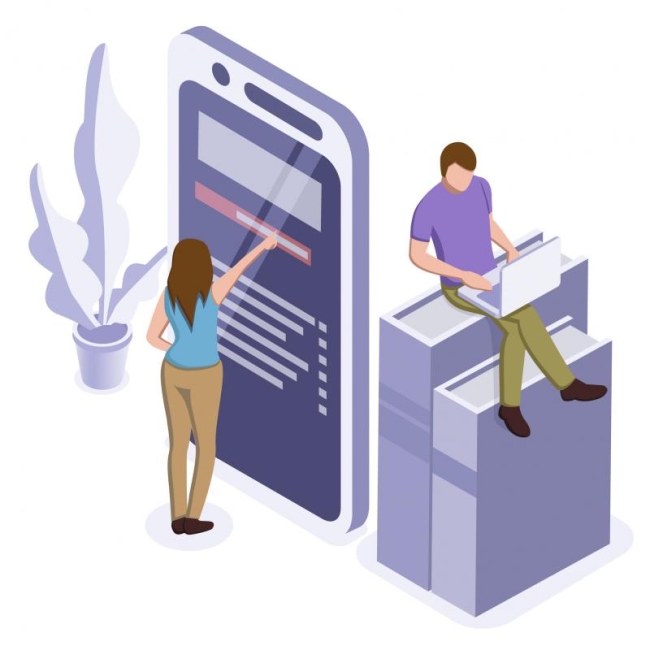You have /5 articles left.
Sign up for a free account or log in.

darkbird77/istock/getty images plus
Between 2019 and 2021, we were co-instructors of a methods-based course called Cultures of U.S. Empire in the history and literature concentration at Harvard College, an interdisciplinary honors program in the humanities. This was a course that served as a gateway to the major for sophomores, and rather than stressing specific content matter, the course and its assignments were more geared toward imparting skills in both historical research and literary analysis. Neither of us had team-taught before this experience.
You might think that co-teaching divides the work in half, but that is not always the case. A co-teaching arrangement can actually create more work for instructors in many ways. For starters, it could even take twice as long to grade papers, if both instructors decide to read through all the papers to collaborate on marginal and final comments. Instructors who are used to having full control over their classroom must also adapt to an arrangement in which each teacher may have a different style or approach to the classroom. There is far less room for last-minute planning, since the co-teachers must agree on approaches well in advance of the class meeting time. Finally, the pair must develop nonverbal cues to communicate on the fly, a difficult enough task to accomplish even when classes meet in person instead of on Zoom. In short, it’s a lot more work than you might expect.
Over these three years of collaboration, we have grown tremendously as instructors. As our time together as co-teachers has come to a close, we find ourselves wanting to record the lessons we have learned from our experience and from each other. It is our hope that these lessons might help others who currently engage in, or perhaps hope to begin, collaborative teaching.
Model conversations about your distinctive research practices. We discovered quickly that our approaches to research were very different. Of course, one of us, the historian Mark, was interested in archives, while the other, literary scholar Ellen, was more interested in engaging literary texts. But the distinctions ran deeper than this, as Mark focused more on context, contingency and material conditions while Ellen was drawn to aesthetics, form and writing style.
Rather than act like we were always on the same page about our own priorities in research, we emphasized the differences aloud in front of our students. We frequently asked each other, “How does it work in your discipline?” Ellen repeatedly told students in the class that she had never been to an archive, in an effort to stress that you can approach research in many legitimate ways. Such an approach gave us the added benefit of showing students that the instructors could learn from each other. That leads us to our following point.
Create a classroom structure in which no one is the boss. Instead of each of us attempting to assert authority over or total mastery of a subject, we revealed ourselves to be collaborators in the quest to develop knowledge. Because we explicitly modeled this willingness, our students saw our class as a true learning community. This structure helped us in our commitment to making the classroom a space where students were comfortable testing out ideas and growing as scholars. That meant giving students time and space to ask questions but also making it clear that we did not hold all the answers. Such a nonhierarchical approach was helpful in readjusting the class to a virtual format and maintaining a supportive atmosphere during the COVID-19 pandemic.
On a logistical level, because the students were already accustomed to a collaborative dynamic in the classroom, the move to group activities in breakout rooms over Zoom was relatively seamless. More important, our nonhierarchical classroom structure helped all of us understand that we shared a collective responsibility to cultivate a pathway forward during an uncertain time.
Know your own teaching persona. Working with another person will either accentuate that persona or tone it down. We benefited from consistently discussing and evaluating our distinct personas, which allowed us to support one another and balance each other's style. In our case, we had more things in common than not -- we both tend to be animated teachers, willing to deploy sarcastic humor to further conversation and put students at ease. Working together made us lean into these personas in a united front, rather than falling into a good cop/bad cop or serious/fun routine.
Be aware of the expectations that students have based on your individual identity positions. Differences in race, gender and area of expertise may influence how students read you as a teacher. We both occupy the same racial position (Asian American) but different gender positions. At the end of our first year of co-teaching, we noticed clearly gendered comments in our evaluations: some students specifically pointed out Mark’s “ability to synthesize difficult concepts” while praising Ellen for being “caring and kind.” We don’t have easy answers for how to deal with this, but it’s important to be aware of the multiple factors that may help to determine students’ perceptions and expectations about what constitutes good teaching.
Accept it’s not always 50-50. Sometimes, someone carries more of the workload. But if both parties take the job seriously, the division of labor will probably average out to about equal over time. For example, Mark took care to respond to student inquiries over email right away; he got started on paper comments before Ellen did; he communicated more frequently with our administrators about students who were falling behind. At the same time, Ellen lectured more during certain weeks than Mark did. She also often took the lead on teaching the nuts and bolts of academic writing.
Trust each other. Although we were fortunate to have developed a true friendship over the years, we recognize that won’t always be the case. If you can’t imagine becoming friends with your co-teacher, you must at least trust that person as a professional. You can’t plan for every contingency or make everything look seamless, but you can develop a respectful understanding that will keep you from fighting over the steering wheel when you encounter difficult moments. In our classes, that included figuring out when and how to transition between activities and determining how to engage sensitive questions or comments that could derail the conversation.
Ultimately, we have found co-teaching to be an incredibly enriching and rewarding experience. It has required us to be vulnerable and willing to negotiate how we approach the classroom. It has given us the chance to study and apprentice to someone else’s pedagogical approach. We hope that the experience has also allowed students to develop an understanding of different disciplinary methods and to discover where their intellectual interests and orientations lie.
If nothing else, co-teaching gave us the opportunity to learn from each other. Mark likes to joke that he’s learned about poststructuralism, and Ellen says she finally understands what “historiography” refers to. All in all, we both feel privileged to have been each other’s student and collaborator.








